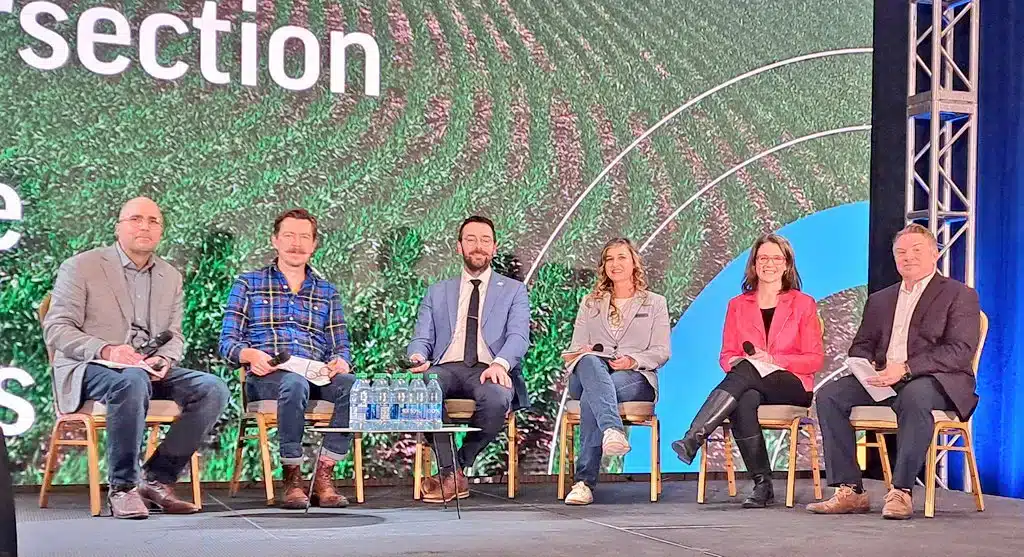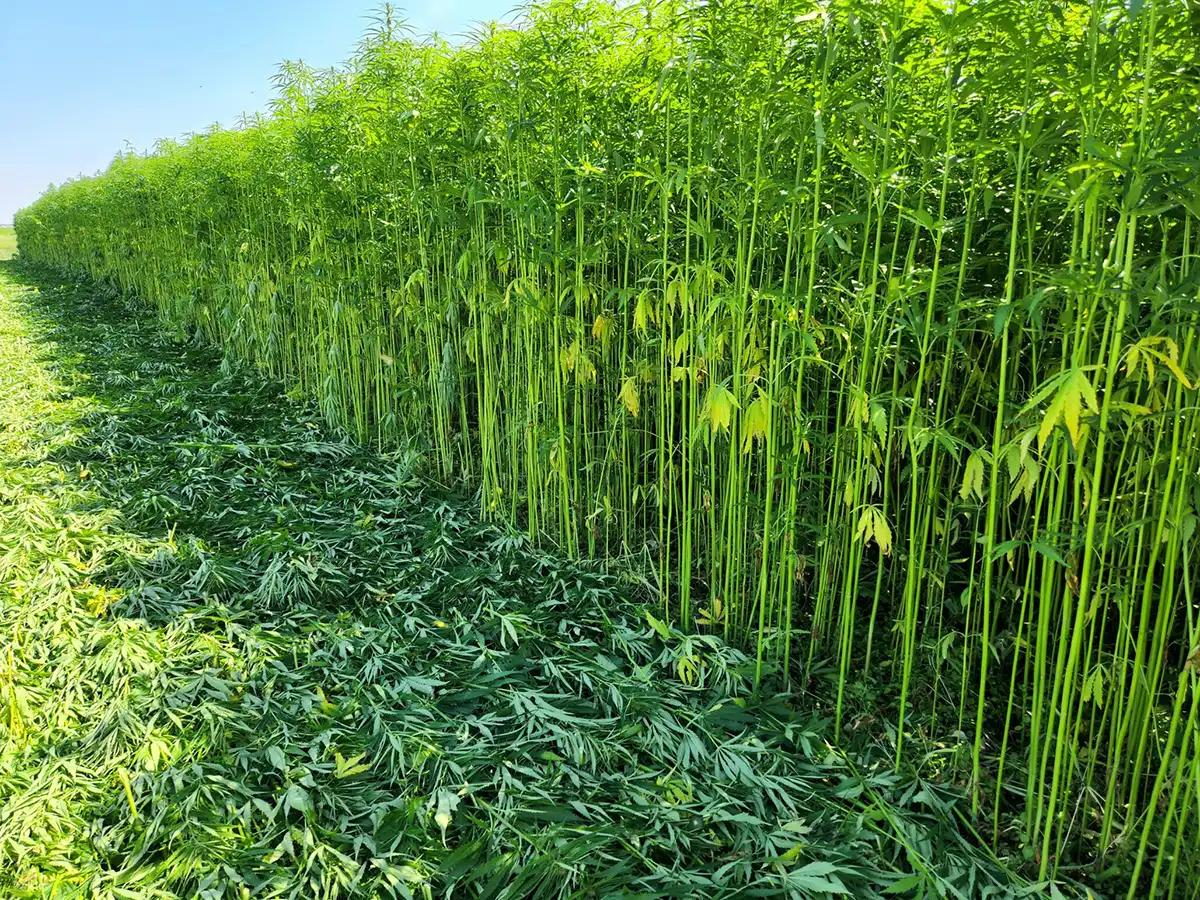Agriculture and Agri-Food Canada (AAFC) currently stands as the biggest variety development program in Canada when it comes to cereals and pulses, but the misconception that growers solely fund it through levy dollars or royalties is far from accurate. While these contributions play a role, things like checkoff dollars fall short of adequately supporting the program.
This reality underscores the urgent need for collective ownership and responsibility within the ag industry. It’s not solely the burden of seed growers, distribution companies, or developers; it’s a challenge that requires the commitment of all stakeholders, including farmers.
That was the message delivered by Jeff Jackson last week at the CrossRoads Crop Conference in Calgary, Alta., as part of an Alberta Seed Guide-sponsored panel discussion on how the seed value chain contributes to the sustainability of farming operations. Jackson was on the panel representing SeedNet, an Alberta-based seed company of which he serves as general manager.
“We need to transition away from heavy reliance on government funding and take ownership of this crucial aspect of agriculture. By doing so, we can ensure stability and continuity regardless of shifts in political landscapes or government priorities,” he told the crowd of around 500 people who gathered for the annual event.
It’s time for each of us to recognize our role in this equation and approach it with the seriousness it demands. Failure to act could result in the loss of invaluable capacity in the near future, Jackson said.
Joining him on the panel were Alberta’s Sheri Strydhorst (owner, Sheri’s Ag Consulting), Greg Stamp (seed sales manager, Stamp Seeds), Chelsea Tomlinson (owner, True Seeds) and Morgan Webb (president, Seed Check). The discussion, moderated by Seed World Canada editor Marc Zienkiewicz, emphasized the importance of investing in new genetics in order to ensure a steady stream of new seed varieties to ensure growers’ success.
“We tend to reward and support our equipment suppliers with our purchases if we appreciate their products and what they offer. We incentivize our chemical suppliers when we buy their products for crop spraying. However, when it comes to plant breeding, I don’t think we’ve always provided the same level of support,” said Tomlinson, who sits on the board of the Alberta Seed Growers and grows seed east of Redwater.
Mother Nature constantly presents us with new challenges like wheat midge, drought, pests, and resistant weeds, and plant breeders consistently come up with solutions. Yet, much of the ag industry often overlooks the importance of their contributions, she noted.
“Think about clubroot-resistant canola; it appeared just when we needed it most, saving many of us in northern Alberta from significant losses. This makes me wonder: are we doing enough to incentivize and support plant breeders? If we’re not investing in their work or sharing a portion of our profits, why would they continue to innovate? Will they be there for us in the future if we don’t show our appreciation and support now? These are important questions that deserve serious consideration.”
Strydhorst said she’s worried that the ability to conduct essential trials, such as registration and regional variety trials, is facing significant jeopardy. The public breeding and testing system is strained due to uncertainties in funding, she told the crowd.
“It’s important that the farming industry unites and advocates for the preservation of this vital component of our variety development process. Simply throwing more money at the problem isn’t a viable solution. We need to reimagine how we fund these endeavours, exploring innovative models that ensure their sustainability,” she said.
Stamp, who sits on the board of the Alberta Pulse Growers, said while checkoff dollars to contribute to variety development, much of this funding isn’t directly allocated to competitive breeding programs that result in new varieties hitting the market.
Instead, it often supports essential behind-the-scenes work, such as addressing complex issues like root rot.
“The checkoff system allows for input from a board of directors to prioritize research initiatives, aiming to enhance the industry’s overall efficiency and benefit farmers and checkoff payers. Additionally, the link between certified seed sales and funding for breeders underscores the importance of robust sales in sustaining the system,” he said.
However, discrepancies in purchasing habits among farmers mean that some may contribute more to the system than others, leading to questions about its long-term sustainability.
“As farmers, we need to reflect on whether this funding structure aligns with our long-term interests and supports the continued advancement of our industry. We need to consider how we can collectively ensure adequate support for breeding and research initiatives moving forward.”
Webb, who in addition to being president of Seed Check Technologies in Leduc, Alta., is also a certified crop inspector, said one of the most surprising aspects that often goes overlooked is the consequence of buying seed from a neighbour or repeatedly growing saved seed without purchasing new pedigreed seed.
When this happens, the checks and traceability mechanisms that ensure genetic purity are no longer in place. This highlights the importance of the pedigreed seed system in ensuring quality seed for farmers.
“For instance, during a field inspection at a pedigreed seed grower’s farm, if I discover traces of an old wheat variety that shouldn’t be present in their current crop, it’s a concerning indication of potential cross-contamination or seed mixing. Even if the farmer isn’t aware of this, the risk of inadvertently introducing foreign genetic material into their crop increases with each generation of saved seed,” he said.
This scenario highlights the critical importance of maintaining genetic purity in seed production. Without proper adherence to pedigree standards and the use of certified seed, the integrity of the crop’s genetics can be compromised. Cross-pollination within the field and the presence of unintended varieties can significantly impact the quality and consistency of the harvest.
The panel also offered farmers some helpful tips on better understanding Canada’s seed system and the importance of safeguarding it.
“Buying seed from a neighbour is illegal,” Jackson noted. Considering the importance of sustainably funding our breeding programs, this act directly deprives seed developers of their rightful royalties. And given that the royalties they’re currently collecting are already insufficient, this only exacerbates the issue further.
“I urge everyone to carefully consider the implications of such actions. It’s important to respect these laws and support the proper channels for acquiring seed, ensuring fair compensation for the developers and the continued progress of our agricultural industry.”












